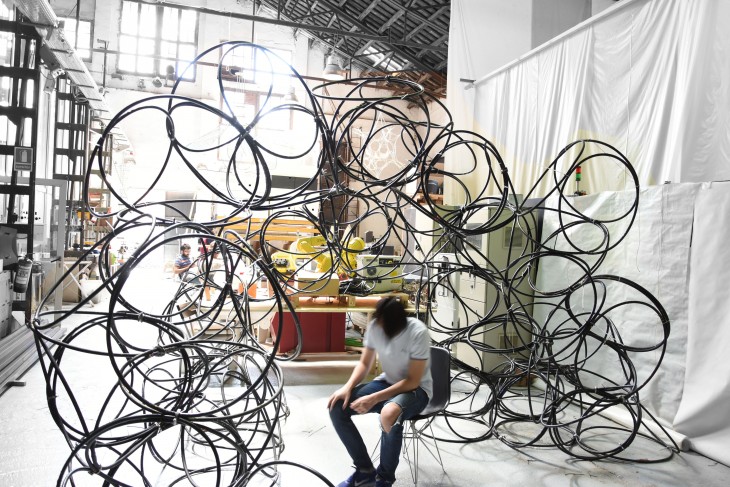
Anyone can build a pavilion. The idea matters when u can hack the system to make a rapid pavilion. The concept of building something out of anything and everything that’s readily available matters as the terminology of a user friendly design is substantially the ideal way to make a pavilion. The rotation of the notion comes to an assembly of micro to macro components pre supported by a temporary joint of plastic zip-ties to establish a format for the structure taking the shape and then stabilizing the whole format with a metal grip-joint to avoid the hoops from slipping due to extreme compression and tension. As the compression of the lower half components is inevitable the most due to extreme compression and the upper half experiencing extreme tension, multiple base junctions need to be established along with the positioning to formulate the form format. The structure consists of the minimal usage of components to ease of the complexity during its formation as the distributive loads play an important part in the typologies of elements playing their part in the formation of the pavilion. The components consist of hula hoops, plastic zip-ties for a temporary lock and circular metal joints for the final lock. The next part consists of joining loops of 2 different sizes into forming components of 4. A single loop can be attached to 3 other loops forming macro components of 4 loops with 2 sizes and different selective patterns like A-BBB. The structure starts gaining extreme weight at certain points compelling the user to opt for multiple stabling factors with the help of the nearest surroundings. Once the compressive procedure establishes on the base, the tension components can be united to from the shelter. The process takes a small amount of time if the base is established well enough to take the compressive load as well as the upper half tension.
Macro-components: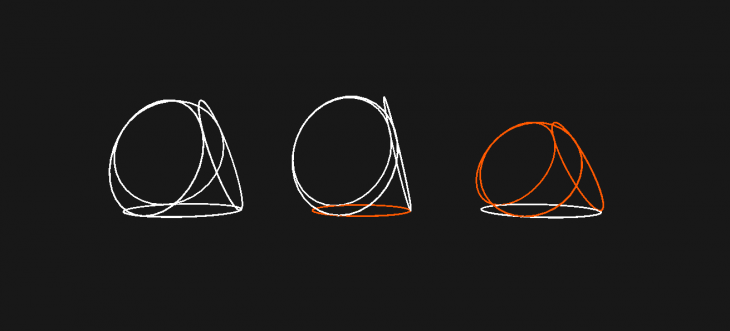
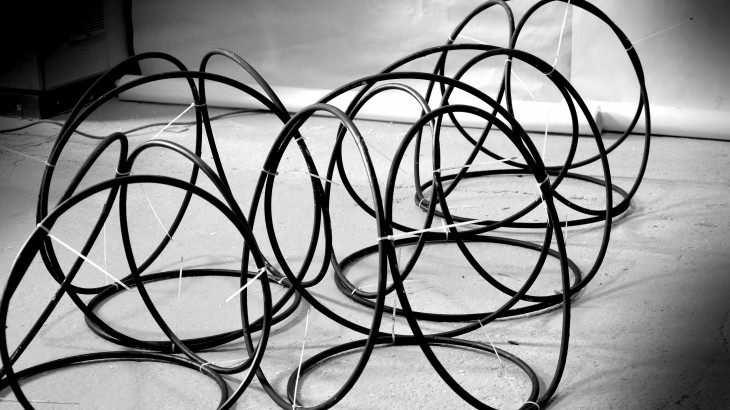 Construction process:
Construction process:
Final Result: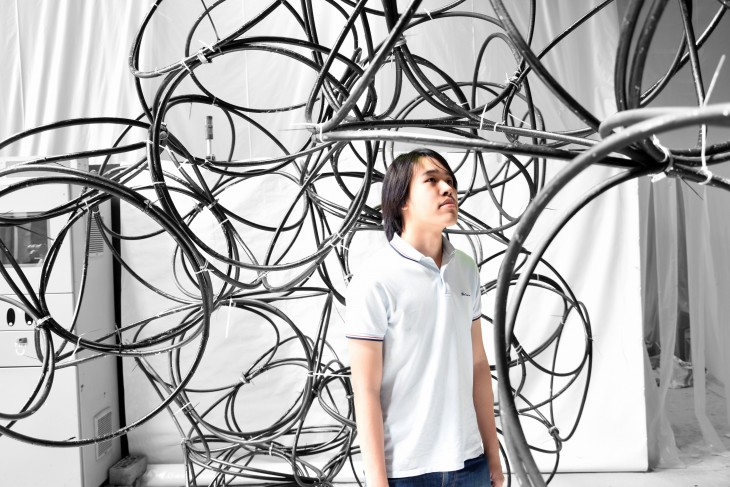
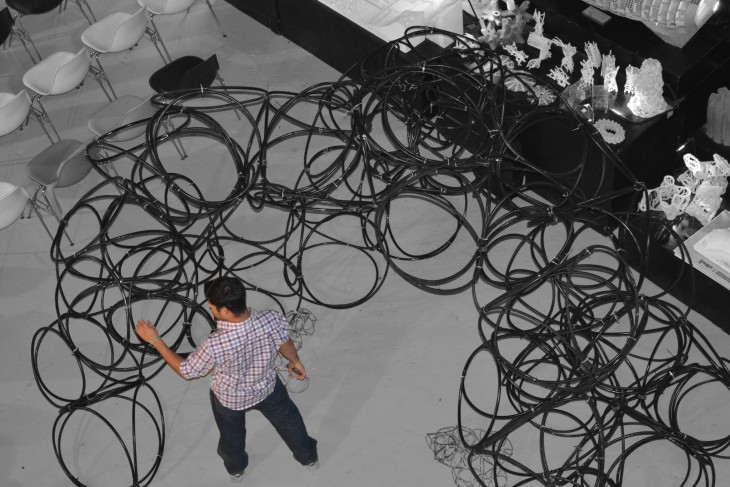
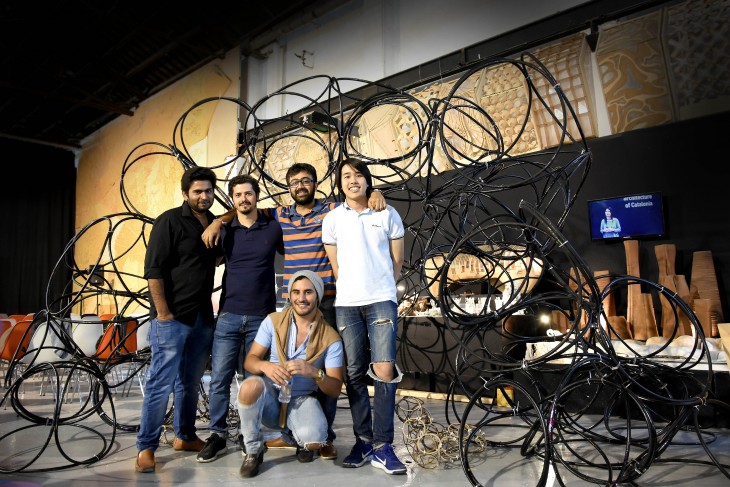
Pukawiss Pavilion is a project of IaaC, Institute for Advanced Architecture of Catalonia developed at the Master in advance architecture in 2015/2017 by:
Students: Carlos Daniel Gómez, Inthat Ueasakaree, Fabio Menezes, Nisarg Sheth, Vishnu Jadia
Faculty: Silvia Brandi, Rodrigo Aguirre